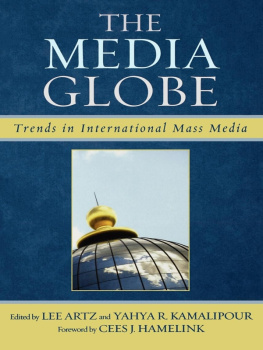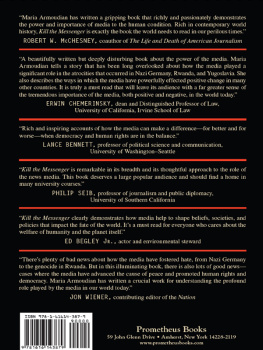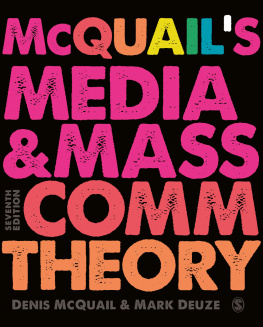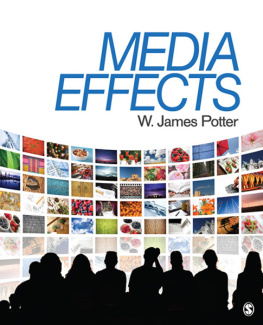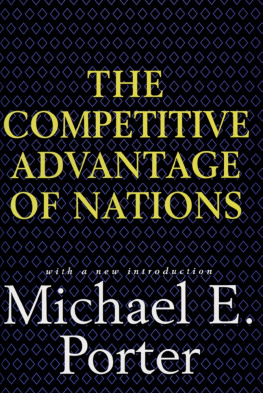This edition published in the Taylor & Francis e-Library, 2008.
To purchase your own copy of this or any of Taylor & Francis or Routledges collection of thousands of eBooks please go to http://www.ebookstore.tandf.co.uk/.
Copyright 1999 by Lawrence Erlbaum Associates, Inc.
All rights reserved. No part of the book may be reproduced in
any form, by photostat, microform, retrieval system, or any
other means, without prior written permission of the publisher.
Lawrence Erlbaum Associates, Inc., Publishers
10 Industrial Avenue
Mahwah, NJ 07430
Cover design by Kathryn Houghtaling Lacey
Library of Congress Cataloging-in-Publication Data
Olson, Scott Robert.
Holly wood planet: global media and the competitive
advantage of narrative transparency/Scott Robert Olson.
p. cm.
Includes bibliographical references and index.
ISBN 0-8058-3229-7 (alk. paper).ISBN
0-8058-3230-0 (pbk.: alk. paper)
1. Mass mediaUnited StatesInfluence. 2. Mass
media and culture. I. Title
P92.U5044 1999
302.23 0973DC21
9855063
CIP
ISBN 1-4106-0444-6 Master e-book ISBN
Do
Kasia i Luczyna
LEAs COMMUNICATION SERIES
Jennings Bryant/Dolf Zillmann, General Editors
Selected titles in Communication Theory and Methodology subseries (Jennings Bryant, series advisor) include:
BergerPlanning Strategic Interaction: Attaining GoalsThrough Communicative Action
Dennis/WartellaAmerican Communication Research:The Remembered History
EllisCrafting Society: Ethnicity, Class, and Communication Theory
GreeneMessage Production: Advances in Communication Theory
Heath/BryantHuman Communication Theory and Research:The Remembered History
Riffe/Lacy/FicoAnalyzing Media Messages: Using QuantitativeContent Analysis in Research
Salwen/StacksAn Integrated Approach to Communication Theoryand Research
For a complete list of other titles in LEAs Communication Series, please contact Lawrence Erlbaum Associates, Publishers.
Introduction: Media and Cultures
What are the media doing to culture? The American film Dirty Dancing (1987), the tale of a summer romance between a rich guest at an exclusive resort and an across-the-tracks boy she meets there, was a big hit with teenage Hindus and Sikhs living in Britain. They saw in it a reflection of Diwali, the traditional festival of lights that celebrates the goddess Lakshmi (Gillespie, 1995b). Their parents, like the parents in the film, were somewhat aghast; the young peoples restaging of the films climactic dance number signified for the older generation the chaos of cultural pollution, but for the kids, the culture in the film was theirs already. Meanwhile, terrorists angered by U.S. policy detonate bombs in Planet Hollywood restaurants (Hairis, 1998). American media are everywhere and responses to them are complex.
Scholars and politicians often proclaim that there is a fork in the road: tradition versus Dirty Dancing (1987); culture versus anarchy. Cultureanarchy is the dialectic that academics and politicians use to talk about the global medias effect on children and that Hindu parents use to talk about the Westernization of the Diwali festival. It has them wringing their hands. In this formulation, culture is everything good that we stand to lose and anarchy is what the mass media let loose on us. Setting culture against anarchy is not new, as anyone familiar with Matthew Arnold (1932 2) will recognize; he set culture against anarchy as the stuff we should preserve, the best that has been thought and said. Such a formulation still suits admonitions that culture is fragile and has to be protected. A modern variant of Arnold is reflected in this statement on media flow from a United Nations Educational, Scientific, and Cultural Organization (UNESCO) Conference in the 1980s:
Culture is certainly universal but we are careful not to reduce everything to the same level. The first cultural right is that of a people to take their own decisions. All our countries accept too passively a certain invasion of or submission to images produced elsewherewhich inevitably wear away national cultures and transmit a uniform lifestyle which it is attempted to impose on the planet as a whole. (Forbes, 1988, p. 61)
As Ang (1988) indicated, This cultural contamination is all the more threatening because it involves a sort of conspiracy between internal and external forces (p. 72). The same dialectic led to UNESCOs MacBride Commission report calling for a New World Information Order (NWIO, Hamelink, 1997) and to numerous subsequent attempts to keep the NWIOs spirit alive (e.g., Raghavan, 1995; Vincent, 1997). These reports point toward what seems to be a simple choice: We must choose culture, or we will have anarchy.
In part, because of these new world dreams, Arnolds (1932) idea of culture as being the cream at the top is a modernist dream mostly abandoned. Is any consensus on what is the best possible at the millennial fin de siecle? From the perspective of the 20th centurys end, the notion of a single best culture seems quaint but impossible. After the horrible experiments in uto pian culture that this century scarcely survivedmany grotesque and cruel attempts at preserving the best that included National Socialism, Maoism, and Stalinismthe idea of ordaining certain artifacts to be the best seems futile and potentially dangerous. We are more content with pluralism than our modernist forebears.
So the option is not really between culture and anarchy, but rather between cultures and anarchy. We have not to choose between the one true and one false path but between many competing routes to paradise or perdition. There are plenty of cultures to go around. It is common to hear aca-demic talk about Western culture, national culture, organizational culture, subcultures, cocultures, counterculture, media culture, pop culture, and internet culture. Indeed, there is now The Dictionary of Global Culture (Appiah & Gates, 1997) to offset the Arnoldism of projects like Cultural Literacy (Hirsch, 1988). Everything is culture. Culture is everything. Here, there are stark, real, and important choices.
This volume is essentially about the choice between cultures and anarchy, as well as the role that the international media play in coaxing us to one or the other. As television programs and films freely travel across national bordersfrom one cultural context to anotherdo they reinforce the difference or sameness of cultures? Is it possible that they do something else, something unrelated to reinforcing a dichotomy between difference or sameness?
The most common explanation about what media do to culture that is provided by media scholars is that international mass media embody a choice between indigenous culture and an imported (and probably Ameri-can) culture, with the imported values and beliefs probably prevailing over time, resulting in homogenization. Given time, it is argued, this leads to global monoculturea single set of shared values, beliefs, and behaviors imposed or accepted everywhere. Exposure to media causes this change. This tidy dialectic between indigenous and imported is clear and simple and therefore profits from Occams razor, wherein the simplest explanation is assumed to be correct. It is nonetheless a poor description of what is really go ing on. Still, most scholars and elites tend to view the transnational flow of media as something both bad and urgent and that leads to a certain amount of tension within countries that import a lot of media. There is little conseinsus on what should be done about global media, although many approaches have been tried.


